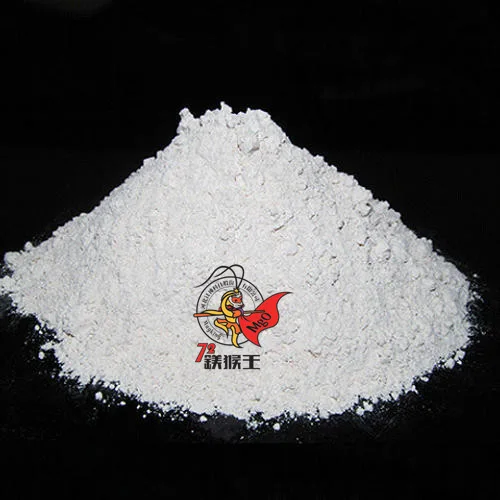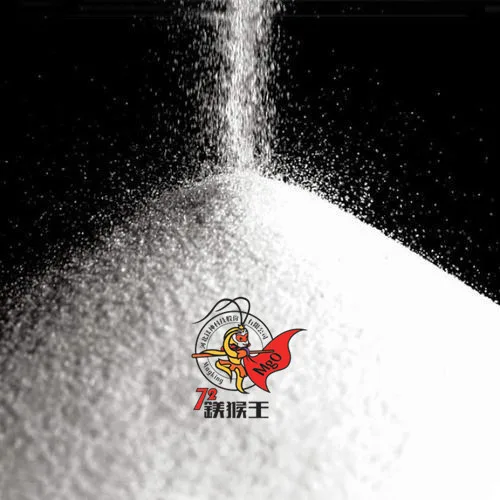Magnesium oxide (MgO) is an essential material in the construction industry, valued for its versatility, durability, and eco-friendly properties. It is categorized into two types: light-burned and heavy-burned. Light-burned magnesium oxide is highly reactive, making it suitable for applications requiring expansion and bonding, while heavy-burned magnesium oxide is more stable and suitable for high-temperature environments. MgO finds widespread applications in cement, concrete, fireproof materials, decorative materials, insulation boards, and other specialized building materials. This article explores these applications in detail, highlighting the benefits and best practices for using magnesium oxide in construction.
Application in Cement and Concrete
Compensating Shrinkage Agent
One of the primary uses of magnesium oxide in cement and concrete is as an expansion agent. During the curing process, concrete experiences shrinkage, which can lead to cracks and structural weaknesses. Light-burned magnesium oxide reacts with water to form magnesium hydroxide, which expands slightly, compensating for shrinkage and reducing the likelihood of cracks. This makes MgO an ideal additive for large-scale concrete structures such as dams, bridges, and tunnels, where long-term durability is crucial.
Refractory Concrete
In high-temperature environments, refractory concrete is necessary to maintain structural integrity. Heavy-burned magnesium oxide is widely used in refractory concrete due to its exceptional heat resistance and stability. It improves the concrete’s ability to withstand prolonged exposure to extreme temperatures, making it suitable for applications such as industrial furnaces, kilns, and foundries. Additionally, MgO enhances the thermal insulation properties of refractory concrete, reducing heat loss and energy consumption.
Anti-Sulfate Attack
Sulfate attack is a common issue in concrete structures exposed to sulfate-rich environments, such as sewage systems, marine structures, and underground foundations. Magnesium oxide improves the sulfate resistance of concrete by reacting with sulfates to form stable compounds that prevent the deterioration of the material. This enhances the longevity of concrete structures and reduces maintenance costs, making MgO a valuable component in sulfate-resistant construction materials.

Fireproof Materials
Magnesium Oxide Fireproof Board
Magnesium oxide fireproof boards are increasingly used in construction due to their excellent fire resistance, moisture resistance, and durability. These boards are made by combining MgO with other materials to create a strong, lightweight, and non-combustible panel. They serve as an alternative to gypsum boards and are commonly used in walls, ceilings, and partition systems in residential, commercial, and industrial buildings. Additionally, MgO boards have antibacterial properties, making them suitable for hospitals and food processing facilities.
Fireproof Coating
Fireproof coatings containing magnesium oxide are used to enhance the fire resistance of building materials. These coatings create a protective layer that delays the spread of flames and minimizes structural damage in case of a fire. MgO-based fireproof coatings are particularly beneficial for steel structures, wooden surfaces, and electrical installations, providing an additional layer of safety in fire-prone environments.
Fireproof Door Core
Magnesium oxide is also used in fireproof door cores, providing a lightweight yet highly fire-resistant core material. Fireproof doors made with MgO cores are capable of withstanding high temperatures and preventing the spread of fire, making them essential for commercial buildings, hotels, and industrial facilities. Additionally, these doors offer soundproofing and moisture-resistant benefits, enhancing their functional value.
Decorative and Functional Panels
Artificial Marble/Quartz Stone
Magnesium oxide is a key ingredient in artificial marble and quartz stone production. These materials are popular alternatives to natural stone, offering superior durability, water resistance, and cost-effectiveness. MgO enhances the strength and hardness of artificial stone, making it suitable for countertops, flooring, and decorative wall panels. Furthermore, MgO-based artificial stone is environmentally friendly, as it reduces the demand for natural stone mining.
Wear-Resistant Floor
Magnesium oxide is used in wear-resistant flooring materials, particularly in high-traffic areas such as shopping malls, warehouses, and industrial plants. MgO-based flooring offers excellent abrasion resistance, chemical resistance, and impact strength, making it a preferred choice for commercial and industrial applications. Additionally, it provides an eco-friendly alternative to traditional cement-based flooring systems.
Insulation Materials
Magnesium oxide is widely used in insulation materials, particularly in MgO insulation boards. These boards offer excellent thermal and sound insulation, making them suitable for use in residential and commercial buildings. MgO insulation boards are lightweight, fire-resistant, and moisture-proof, making them an ideal alternative to traditional insulation materials like gypsum or fiber cement boards. They are commonly used in wall partitions, ceilings, and flooring systems, contributing to energy-efficient building designs.
Conclusion
Magnesium oxide is a highly versatile material with numerous applications in the construction industry. From improving the durability and fire resistance of concrete to enhancing decorative and functional building materials, MgO offers a range of benefits. Its ability to compensate for shrinkage, resist fire, and withstand sulfate attacks makes it an indispensable component in modern construction. Additionally, its eco-friendly nature and antibacterial properties further enhance its appeal. As the demand for sustainable and durable building materials grows, magnesium oxide continues to play a crucial role in advancing construction technologies.
FAQs
What is the difference between light-burned and heavy-burned magnesium oxide?
Light-burned magnesium oxide is more reactive and is primarily used as an expansion agent in concrete and cement applications. Heavy-burned magnesium oxide is more stable and heat-resistant, making it suitable for refractory and fireproof materials.
Why is magnesium oxide used in fireproof materials?
Magnesium oxide is naturally fire-resistant and does not release toxic fumes when exposed to high temperatures. It is used in fireproof boards, coatings, and door cores to enhance fire safety in buildings.
How does magnesium oxide improve the durability of concrete?
Magnesium oxide compensates for shrinkage, enhances sulfate resistance, and improves the overall strength of concrete. It also contributes to thermal stability, making concrete structures more durable in harsh environments.


